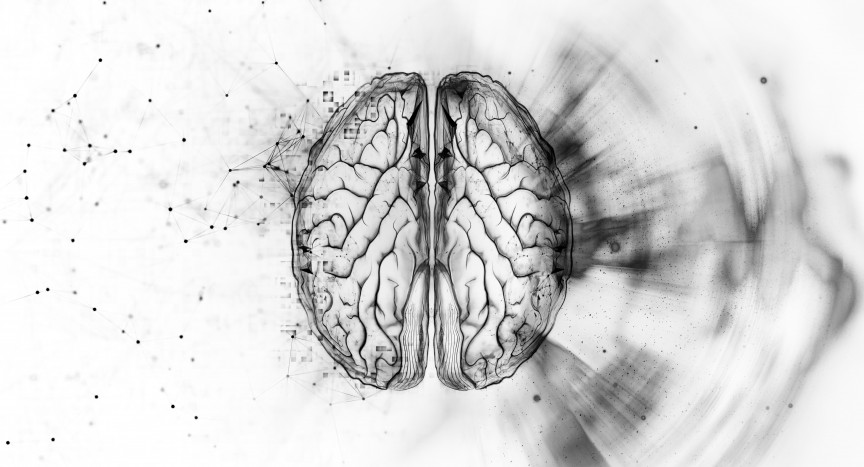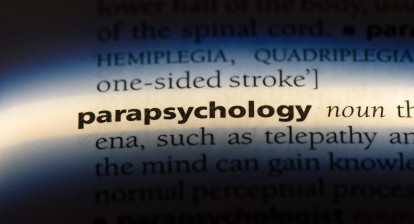Recently there has been a notable increase in the number of research articles relating to the study of out-of-body experiences (OBEs) that have been published in the mainstream literature. Most of these articles have focused on the search for the areas of the brain that may be associated with one common feature of the OBE – seeing one’s own body from a distance. The latest contribution to this search comes from a team of neurosurgeons led by Dr. Dirk De Ridder from the University Hospital of Antwerp, Belgium, and their findings are reported in a case study that was just published in the November 1 issue of the prestigious New England Journal of Medicine (De Ridder et al., 2007). Their report appears to build upon earlier brain studies related to the artificial induction of features often associated with OBEs.
The history of such studies dates back to the early 1940s, when Canadian neurosurgeon Wilder Penfield was able to induce OBE-like sensations in a female epileptic patient by electrically stimulating the right side of her brain in the area around the superior temporal gyrus, a fold along the upper surface of the temporal lobe across the way from the parietal lobe (Penfield & Erickson, 1941). The patient had the feeling of floating away and stated, “I have a queer sensation as if I am not here…As though I were half here and half not here.” Penfield’s work was rediscovered in late 2002 when Dr. Olaf Blanke and his associates at the University Hospital of Geneva, Switzerland, were able to induce similar floating sensations in a female patient being treated for complex partial epilepsy. Electrodes had been implanted into the right side of the patient’s brain around the angular gyrus, an area located at the boundary between the temporal and parietal lobes, to measure her seizures. When she was given mild electrical stimulation in this area via the electrodes, the patient reported instant feelings of “lightness” and “floating” close to the ceiling, and stated, “I see myself lying in bed, from above, but I only see my legs and lower trunk” (Blanke et al., 2002). Blanke and his associates were able to further explore OBEs, as well as the similar experience of autoscopy [1], in this patient and four other neurologic patients in a later study, finding that the patients’ experiences may be associated with damage or impairment in the area surrounding the temporal-parietal lobe junction (Blanke et al., 2004). The area around the temporal-parietal junction appears to be involved in the culling together and processing of sensory information relating to the perception and spatial orientation of one’s own body [2], and Blanke and his associates theorize that OBE-like perceptual illusions may arise from functional disruption as a result of the brain damage or impairment in this area (Blanke et al., 2004, 2005; Blanke & Mohr, 2005).
The latest case study by De Ridder et al. (2007) conceptually reproduces the work of Blanke and his associates. The study involves a 63-year-old male patient being treated for tinnitus [3] by way of electrodes implanted in the area over the temporal-parietal junction. When the right side of his brain was electrically stimulated through the electrodes, the patient experienced a sensation that gave him the impression that his self had separated from his body, moving to a location just behind and to the left of his body. He did not, however, report taking the perspective of his separated “out-of-body” self (i.e., he was still seeing his surroundings from within his own body), nor did he report seeing an image of his own body. On average, the patient’s sensation of leaving the body lasted about 17 seconds, and no changes in his state of consciousness occurred during them. Brain scans using positron-emission tomography (PET) revealed widespread activity in the area around the temporal-parietal junction, near the angular gyrus.
Although the study by De Ridder et al. does provide useful supplementary data on the function of the temporal-parietal junction, I personally think that labeling the patient’s induced sensation as an OBE is something of a misnomer. As noted, the patient did not perceive his surroundings from outside his body, nor did he report seeing his own body, suggesting that his sensations did not take on the classic structure of an OBE. The patient’s separated self was always stationary, and could not be moved voluntarily, whereas people often report being able to move about freely in their out-of-body form in natural OBEs.
Similar arguments can be made about the induced OBE-like sensation in Blanke et al.’s epileptic patients. A close look at their experiences reveals illusory features (e.g., perceiving distortions of the body and shadowy figures) that are not commonly found in natural OBEs and are more suggestive of hallucinations. Thus, the features of naturally occurring OBEs in healthy people and the OBE-like experiences in these epileptic patients can be considered different, and may not be easily comparable. Some attempt has recently been made to artificially induce similar OBE-like perceptions of the body in healthy people, although this has been through the use of virtual reality (Ehrsson, 2007; Lenggenhager et al., 2007), which again does not allow for direct comparisons. Perhaps most central of all, the findings of Blanke et al. and De Ridder et al. still cannot adequately account for ESP-related OBEs in which individuals describe people and events at a distance that are later verified as accurate (Alvarado, 2000, pp. 199 – 200; Tart, 1998), nor can they account for the successful results of studies where some aspect of the OBE was “detected” using physical and animal detectors (Morris et al., 1978; Osis & McCormick, 1980). In the case of Blanke et al., the EEG findings of Tart (1998) and others (Alvarado, 2000, pp. 189 – 190) have yet to be incorporated into their theoretical considerations as to their possible role [4]. In short, while these recent mainstream studies go a way in advancing our knowledge about brain areas involved in body perception, they still have miles to go in adequately explaining complex OBEs.
– Bryan Williams
Notes
[1] Autoscopy is a neurological phenomenon in which an individual reports seeing an illusory duplicate image of their own body in physical space. It has also been traditionally known as the doppelgänger, or “double,” experience. It is distinguished from the OBE in that the individual still perceives their surroundings from a perspective within their own body (whereas the individual perceives things from a perspective somewhere outside their body in the OBE).
[2] This would be consistent with the area’s proximity to the somatosensory cortex, located in the parietal lobe, which processes incoming sensory information from the body’s sensory organs.
[3] Tinnitus is a chronic hearing condition in which noises such as buzzing or ringing are frequently heard in the ear, which in this patient’s case may be caused by an abnormality in the auditory nerve and/or its brain connections.
[4] These EEG studies, conducted with relaxed or sleeping individuals, have found that OBEs tend to be associated with brain wave patterns in the alpha wave range with no rapid eye movement (REM) sleep, suggesting that they occur during a relaxed, sensory-reduced state; and that they are not dream-related.
References
Alvarado, C. S. (2000). Out-of-body experiences. In E. Cardeña, S. J. Lynn, & S. Krippner (Eds.) Varieties of Anomalous Experience: Examining the Scientific Evidence (pp. 183 – 218). Washington, D.C.: American Psychological Association, Inc.
Blanke, O., Landis, T., Spinelli, L., & Seeck, M. (2004). Out-of-body experience and autoscopy of neurological origin. Brain 127(2), March. pp. 243 – 258.
Blanke, O., & Mohr, C. (2005). Out-of-body experience, heautoscopy, and autoscopic hallucination of neurological origin: Implications for neurocognitive mechanisms of corporeal awareness and self consciousness. Brain Research Reviews 50(1), December 1. pp. 184 – 199.
Blanke, O., Mohr, C., Michel, C. M., Pascual-Leone, A., Brugger, P., Seeck, M., Landis, T., & Thut, G. (2005). Linking out-of-body experience and self processing to mental own-body imagery at the temporoparietal junction. Journal of Neuroscience 25(3), January 19. pp. 550 – 557.
Blanke, O., Ortigue, S., Landis, T., & Seeck, M. (2002). Stimulating illusory own-body perceptions. Nature 419(6904), September 19. pp. 269 – 270.
De Ridder, D., Van Laere, K., Dupont, P., Menovsky, T., & Van de Heyning, P. (2007). Visualizing out-of-body experience in the brain. New England Journal of Medicine 357(18), November 1. pp. 1829 – 1833.
Ehrsson, H. H. (2007). The experimental induction of out-of-body experiences. Science 317(5841), August 24. p. 1048.
Lenggenhager, B., Tadi, T., Metzinger, T., & Blanke, O. (2007). Video ergo sum: Manipulating bodily self-consciousness. Science 317(5841), August 24. pp. 1096 – 1099.
Morris, R. L., Harary, S. B., Janis, J., Hartwell, J., & Roll, W. G. (1978). Studies of communication during out-of-body experiences. Journal of the American Society for Psychical Research 72(1), January. pp. 1 – 21.
Osis, K., & McCormick, D. (1980). Kinetic effects at the ostensible location of an out-of-body projection during perceptual testing. Journal of the American Society for Psychical Research 74(3), July. pp. 319 – 329.
Penfield, W., & Erickson, T. C. (1941). Epilepsy and Cerebral Localization. Springfield, IL: Charles C. Thomas.
Tart, C. T. (1998). Six studies of out-of-body experiences. Journal of Near-Death Studies 17(2), Winter. pp. 73 – 99.







